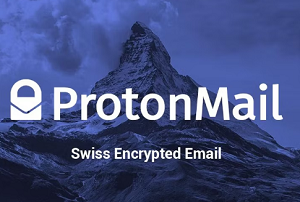
GhostPhones & The Expansion of The Digital Second Realm
GhostPhones & The Expansion of The Digital Second Realm
The Surveillance State & their creepy corporate cohorts have been here for decades, mining all of your private information and feeding it into their AI algorithms. Of course, the stated, cuddly reason is to feed you “personalized advertisements,” but the real goal is to figure out how to control you. What triggers you? What makes you happy? How can that be manipulated? How can we propagandize Jane into taking the poison dart? Etc.
While the violent nature of the State should not be disregarded, we have more so entered the realm of soft control, where individuals essentially govern themselves – why send out the bludg to force Jane, when we can just send subconscious cues and programming to her “smart”phone to get her to do what we wish?
Further, when organizing resistance efforts to the State or its cast of coercers, or even figuring out solutions to route around them, security culture best practices would advise that doing so with a SpyPhone in your pocket is probably not a wise idea.
But I do understand – I personally had plans to move towards something described in Brian Sovryn’s Dark Android Project a number of years back, but I didn’t have the time or money to dump into the project…that, and to be frank, I was still so entangled in the First Realm that I didn’t see it as a major priority – I knew it was monitored and acted as such, pursuing privacy on different devices and platforms.
But now, there really aren’t any excuses. Free and open source, privacy-enhancing technologies have been developed upon for years, bringing about a new era of user-friendliness in crypto-anarchy; this increasingly tyrannical world we find ourselves in is bringing about new solutions fast, as well as a new sense of urgency with talk and actual implementations of digital poison dart cards/certificates.
The time to dump these digital demons of Babylon, and to move towards our own privacy- and security-centric digital Second Realm infrastructure is now.
The GhostPhone (by Jamin Biconik)
Seeing this drastic need for secure infrastructure and communications, our friend, Jamin Biconik, has made it a focus in his Second Realm work for years. He began with hardware hacking old Lenovo ThinkPads and installing open source, Linux operating systems, and is now onto the realm of smartphones.
His first build on offer is a DeGoogled Pixel 3A with CalyxOS. Why not Graphene or Lineage? The main reason he offered was that CalyxOS comes stock with some really incredible privacy tools, whereas the others basically come as a blank slate, requiring work and a higher barrier-to-entry for most. And further, once an individual adds the apps they want and need, the attack surface is probably similar anyway. So, he opted for user-friendliness, which I support and can attest to – after a couple weeks of use, it’s worked splendidly, without any issues. It’s a major improvement, indeed.
To add to the drastic step up in security, Silent.Link offers mobile data packages or US/UK identities, payable in bitcoin. What this means, is that your GhostPhone can have access to essentially anonymous mobile data on-the-go, as well as a phone number with data + incoming text/voice (so you can confirm phone number, for, say, Signal).
The Coming Improved Second Realm Infrastructure
But The GhostPhone is merely a tool within a large network of infrastructure that Jamin is envisioning.
Essentially, security by compartmentalization and setting up your digital activities to have an esoteric and exoteric side. Briefly, this would mean that less secure activities, like gaming or video streaming, might be relegated to one device and part of the network, with all other parts of your life isolated from it (i.e., you wouldn’t have your secure communications apps or Wasabi Privacy Wallet on that device).
And in regards to video streaming, you wouldn’t be connecting to some third-party service founded by the great-nephew of Edward Bernays (Netflix), but rather your own videos, music, etc. on your cloud storage system connected through your self-hosted FreedomBox (or even locally on your devices, I suppose).
So, to summarize: GhostPhones, GhostTablets, and GhostPads, connected to your FreedomBox, likely routed through VPN and/or Tor, connecting you with other individuals/communities, or between P.A.Z.NIAs in this worldwide network, privately & securely…and when enough of these FreedomBoxes are everywhere, and we get repeaters concentrated densely enough throughout the U.S.S.A, we are one click away from a mesh network, yes, our own fucking Internet.
The overall vision and implementation is still coming together, so consider this an overview at best, with much more to come (and make sure to listen to Jamin’s explanation in TVP #139!).
Security Culture Principles to Note
Upgrading to a GhostPhone does require a change in behavior, though – browsing and otherwise. There are some apps and websites you probably won’t be able to use anymore, and you’ll need to be extremely conscious and aware of your activities. You may even decide to just create a new identity entirely, developing reputation behind a new pseudonym.
For more information, I do recommend checking out Kyle Rearden’s, “Just Below The Surface: A Guide to Security Culture” and Smuggler/XYZ’s, “Second Realm: Book on Strategy”…
TVP #139: GhostPhones & The Expansion of The Digital Second Realm
Or, of course, check out the recent episode of The Vonu Podcast featuring Jamin Biconik. We covered all this and much more, such as:
- Privacy and encrypted communications as fundamental digital roots to the physical Second Realm
- Jamin provides an update on the Ghostpads he builds — keep a lookout at LibertyUnderAttack.com for special VonuPads
- I provide some experiences with and feedback on the new GhostPhones he’s been hardware hacking — DeGoogled Pixel 3A’s with CalyxOS
- Some technical details regarding the GhostPhones (security of CalyxOS, differences between Graphene/Lineage OSs, how he hardware hacks them, etc.)
- Google is the biggest asshole on the block when comes to data stealing
- You can purchase one of them at: LibertyUnderAttack.com/GhostPhone
- Kodi: a great music/video player that comes stock on CalyxOS (but be careful of the Kodi plug-ins)
- The building of the Second Realm communications infrastructure
- Matrix is a bad idea — a datamining hub for Mossad/Israeli intelligence
- Pivoting towards XMPP/Jitsi for the next P.A.Z.NIA Committee of Correspondence chat, channels, individual/private communications, etc.
- If it’s not open source and decentralized, it will be a honeypot at some time, if it isn’t already
- Jamin’s vision for an overarching, private, federated Second Realm Network, wherein we all own our own infrastructure — security by compartmentalization
- Jamin’s shop: Neuron.Ghostpad.net/
The digital Second Realm is here, and under constant development by freedom hackers like Jamin Biconik. Thanks to them all for their service. And thank you for being and here, helping to build this free, parallel society.
We truly live in interesting (and fun!) times.







